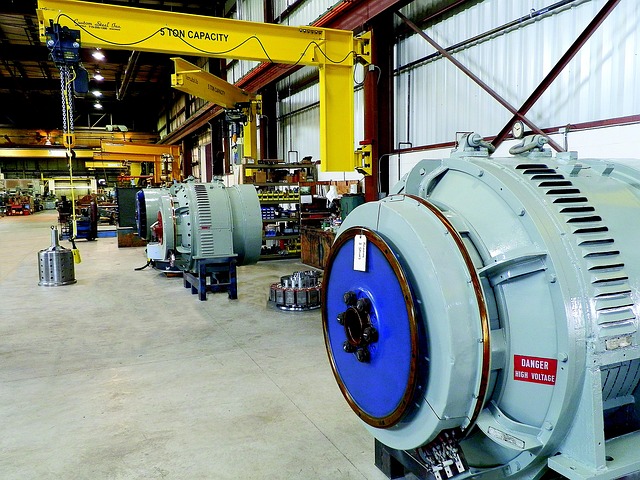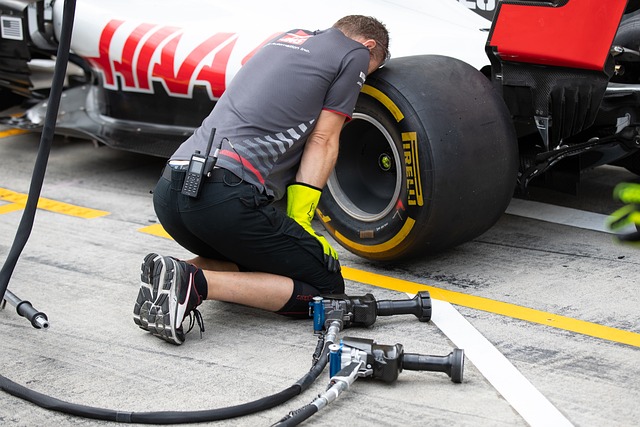Mercedes Wheel Alignment: Repairing Damage from Curbs & Potholes
Mercedes wheel alignment is a critical component of vehicle maintenance, ensuring wheels are correct…….
Welcome to an in-depth exploration of a crucial aspect of automotive engineering and precision driving—Mercedes wheel alignment. This article aims to unravel the intricacies of this process, its global impact, and the technological innovations shaping its future. As we delve into the world of Mercedes wheel alignment, readers will gain valuable insights into how this technology influences vehicle performance, safety, and sustainability.
Mercedes wheel alignment, at its core, is a meticulous process involving the adjustment of a vehicle’s wheels to ensure they are perfectly aligned with each other and with the car’s frame. This precise configuration enables optimal tire contact with the road surface, maximizing grip and reducing uneven wear on tires. Key components include the suspension system, steering mechanism, and wheel bearings, all working in harmony for accurate alignment.
The concept of wheel alignment has evolved over centuries, from simple adjustments to complex technological advancements. In the early days, horse-drawn carriages required manual realignments after every journey. With the advent of automobiles, manufacturers began recognizing the importance of precise alignment for improved handling and tire longevity. Mercedes-Benz, renowned for its engineering excellence, played a pivotal role in refining wheel alignment techniques, setting industry standards that continue to shape modern practices.
Today, Mercedes wheel alignment is not merely about achieving straight-line stability but also about enhancing vehicle dynamics, especially during cornering and at high speeds. It contributes significantly to:
Mercedes wheel alignment has left its mark worldwide, with global trends emerging from regional practices and innovations. Europe, known for its stringent safety standards, has been at the forefront of developing advanced wheel alignment systems. Meanwhile, North America focuses on enhancing fuel efficiency through precise alignment, while Asia-Pacific regions prioritize affordable solutions for a growing market of car owners.
Key trends shaping the future of Mercedes wheel alignment include:
| Trends | Impact |
|---|---|
| Autonomous Vehicles: As self-driving cars become more prevalent, alignment will need to adapt to accommodate advanced steering systems and sensor technologies. | Alignment techniques may evolve to accommodate new vehicle dynamics and safety requirements. |
| Electric Vehicles (EVs): EVs have unique suspension and drive train characteristics, requiring specific alignment considerations. | Specialized alignment equipment and procedures are being developed for EVs to ensure optimal performance and range. |
| Connected Cars: The rise of connected vehicles offers opportunities for real-time alignment adjustments based on driving conditions. | Wireless technology could enable dynamic wheel alignment, enhancing safety and efficiency. |
| Global Standardization: Efforts are underway to harmonize alignment standards worldwide to facilitate cross-border vehicle sales and service. | This standardization aims to simplify after-sales services and ensure consistent vehicle performance globally. |
The Mercedes wheel alignment market is a significant segment within the broader automotive aftermarket industry. According to recent reports, the global market size was valued at USD 3.5 billion in 2021 and is projected to grow at a CAGR of 4.2% from 2022 to 2030. This growth is driven by increasing vehicle sales, rising consumer awareness of alignment’s benefits, and stricter safety regulations.
Manufacturers are investing heavily in research and development to create more sophisticated wheel alignment systems. These investments focus on improving accuracy, reducing setup time, and integrating advanced technologies like sensors, cameras, and AI for dynamic alignment adjustments.
Mercedes wheel alignment has a ripple effect on the economy:
The field has witnessed remarkable technological advancements, transforming wheel alignment from a manual task into a highly precise, data-driven process:
Technological advancements offer numerous benefits:
In the future, we can expect further integration of AR (Augmented Reality) for visual alignment guidance, advanced AI algorithms for automated troubleshooting, and wireless communication to facilitate remote alignment services.
Key organizations play a crucial role in setting standards and regulations for Mercedes wheel alignment:
Regulatory bodies mandate wheel alignment checks as part of periodic vehicle inspections:
Despite its numerous advantages, Mercedes wheel alignment faces several challenges:
To address these issues:
Mercedes-Benz introduced an advanced wheel alignment system in its flagship S-Class sedan, setting a new standard for luxury vehicles. This system utilizes laser technology to precisely adjust wheels while the vehicle is on its dynamic test platform. The real-time feedback loop ensures optimal alignment during various driving conditions, enhancing the S-Class’s renowned comfort and handling.
While not directly related to Mercedes vehicles, NASA’s efforts in space exploration showcase the importance of precise alignment. For the Mars rovers, NASA engineers had to align the vehicles’ wheels and cameras with extreme precision to navigate the Martian surface successfully. This case highlights how wheel alignment principles, though fundamentally the same, can be applied to groundbreaking technological achievements.
The future of Mercedes wheel alignment holds immense potential:
Workshops and manufacturers should:
Mercedes wheel alignment is a testament to human ingenuity and our relentless pursuit of precision engineering. From its humble beginnings as a basic automotive service to becoming a high-tech, data-driven process, it has evolved significantly. This article has explored the historical context, global impact, technological advancements, and regulatory frameworks shaping this critical aspect of vehicle maintenance.
As we look ahead, Mercedes wheel alignment will continue to play a pivotal role in enhancing safety, performance, and sustainability in the automotive sector. With technological innovations on the horizon and a growing emphasis on connected and autonomous vehicles, the future promises exciting possibilities for this essential engineering discipline.
Q: How often should I get my wheels aligned?
A: The frequency depends on various factors, including driving conditions, vehicle type, and suspension design. As a general rule, align your wheels every 10,000-15,000 miles (16,000-24,000 km) or annually, whichever comes first.
Q: Does wheel alignment affect tire wear?
A: Absolutely! Proper alignment ensures even tire wear patterns, extending tire life. Poor alignment can lead to rapid tire degradation, especially on curved roads or during aggressive driving.
Q: Can I align my wheels myself?
A: While some basic alignments are possible for common issues like slight pull to one side, more precise alignments require specialized equipment and training. It’s recommended to seek professional help for accurate and safe results.
Q: How does wheel alignment impact fuel efficiency?
A: Optimized tire contact through proper alignment reduces rolling resistance, leading to improved fuel economy. According to studies, correct alignment can save up to 3% in fuel consumption.
Q: Are there any DIY kits available for wheel alignment?
A: Yes, DIY wheel alignment kits are available for basic adjustments. However, these kits may not address more complex alignment issues and should be used as a last resort or for learning purposes only. Professional services are generally recommended.

Mercedes wheel alignment is a critical component of vehicle maintenance, ensuring wheels are correct…….

Mercedes wheel alignment for lowered or lifted vehicles is crucial for safety and performance due to…….

Mercedes wheel alignment is a critical aspect of routine vehicle care, promoting safe handling, tire…….

Mercedes wheel alignment is crucial for 4MATIC and AMG vehicles, maintaining performance and safety…….

Mercedes wheel alignment is a critical aspect of routine vehicle care, promoting even tire wear, enh…….

Mercedes wheel alignment is crucial for high-performance drivers, ensuring optimal tire positioning,…….

Mercedes wheel alignment is a key, often ignored, element of vehicle upkeep. Correctly aligning whee…….

Mercedes wheel alignment is a critical service that ensures wheels are correctly positioned for opti…….